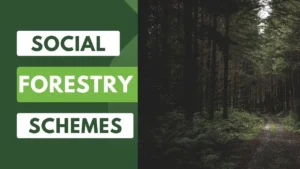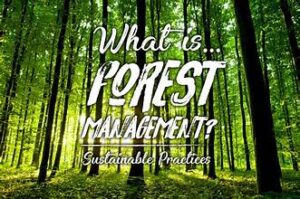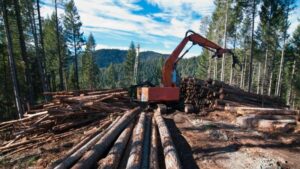In recent years, participatory forestry has emerged as a pivotal approach to managing forests sustainably, empowering local communities and fostering environmental stewardship. This collaborative model engages various stakeholders in decision-making processes, ensuring that the management of forest resources benefits both the environment and the people who rely on them. This article explores the rise of participatory forestry, its benefits, and its impact on sustainable forest management.
What is Participatory Forestry?
Participatory forestry refers to a management approach where local communities are actively involved in the planning, decision-making, and implementation of forest management activities. Unlike traditional top-down management models, participatory forestry emphasizes collaboration and shared responsibility among governments, NGOs, local communities, and other stakeholders.
The Evolution of Participatory Forestry
Historically, forest management was predominantly controlled by centralized authorities with little input from local communities. However, as awareness grew about the limitations of such models—such as poor implementation and lack of local buy-in—there was a shift towards more inclusive approaches. Participatory forestry began gaining traction in the late 20th century as a response to these challenges.
Key milestones in the evolution of participatory forestry include:
- 1980s: The introduction of community forestry programs in countries like Nepal and India.
- 1990s: The rise of international agreements, such as the Convention on Biological Diversity, which emphasized the importance of involving local communities in conservation efforts.
- 2000s: The establishment of various frameworks and guidelines for participatory forestry, including the Forest Stewardship Council (FSC) standards.
Benefits of Participatory Forestry
- Enhanced Local Knowledge and Expertise
Local communities often possess invaluable knowledge about their environment, including traditional practices and ecological insights. Participatory forestry harnesses this knowledge, leading to more effective and culturally appropriate management strategies. This local expertise can enhance biodiversity conservation and improve forest health.
- Increased Stakeholder Engagement and Buy-in
When communities are involved in the decision-making process, they are more likely to support and adhere to forest management practices. This increased engagement reduces conflicts and fosters a sense of ownership and responsibility towards forest conservation.
- Improved Resource Management
Participatory forestry can lead to more sustainable resource management. Communities can help monitor forest conditions, manage resources more effectively, and implement conservation measures tailored to local needs. This collaborative approach can reduce deforestation rates and promote sustainable livelihoods.
- Economic and Social Benefits
Participatory forestry can provide economic opportunities for local communities through activities such as non-timber forest product harvesting, eco-tourism, and sustainable timber production. Additionally, it can strengthen social cohesion and empower marginalized groups by giving them a voice in forest management.
- Resilience to Climate Change
Forests play a crucial role in mitigating climate change by sequestering carbon dioxide. By involving communities in forest management, participatory forestry helps create resilient ecosystems that can better withstand climate-related challenges.
Case Studies of Successful Participatory Forestry
- Nepal’s Community Forestry Program
Nepal’s community forestry program is a pioneering example of participatory forestry. The program grants local communities management rights over forest resources, leading to improved forest conditions and enhanced local livelihoods. Studies have shown that community-managed forests in Nepal have higher biodiversity and better forest cover compared to government-managed forests.
- India’s Joint Forest Management (JFM) Program

India’s Joint Forest Management (JFM) program involves partnerships between the government and local communities to manage forest resources. This approach has resulted in improved forest cover, increased biodiversity, and better community engagement in forest management. The JFM program has also contributed to poverty alleviation through sustainable livelihood opportunities.
- The Amazonian Rainforest Initiatives
In the Amazon basin, participatory forestry initiatives have empowered indigenous communities to manage their traditional territories. These initiatives have led to the preservation of critical rainforest areas and the promotion of sustainable land-use practices. By recognizing indigenous land rights and incorporating traditional knowledge, these programs have achieved significant conservation outcomes.
Challenges and Considerations
While participatory forestry offers numerous benefits, it is not without challenges. Some of the common issues include:
- Power Dynamics: Unequal power relations between stakeholders can undermine the effectiveness of participatory approaches. Ensuring equitable participation and addressing power imbalances are crucial for success.
- Capacity Building: Effective participatory forestry requires capacity building and training for local communities to manage forests sustainably. This includes providing technical support and resources.
- Conflicting Interests: Balancing the diverse interests of different stakeholders can be challenging. Clear communication and conflict resolution mechanisms are essential for addressing disagreements.
Future Directions for Participatory Forestry
The future of participatory forestry lies in enhancing its effectiveness and scalability. Key areas for development include:
- Strengthening Institutional Frameworks: Developing supportive policies and institutional frameworks that facilitate participatory forestry.
- Promoting Knowledge Sharing: Encouraging the exchange of best practices and experiences among communities, governments, and NGOs.
- Leveraging Technology: Utilizing technology, such as remote sensing and geographic information systems (GIS), to support participatory forest management and monitoring.
Conclusion
Participatory forestry represents a significant shift towards more inclusive and sustainable forest management practices. By empowering local communities and fostering collaboration, this approach offers a promising path for conserving forests, supporting local livelihoods, and addressing global environmental challenges. As the world continues to grapple with issues related to climate change and biodiversity loss, participatory forestry stands out as a vital strategy for achieving long-term sustainability.



